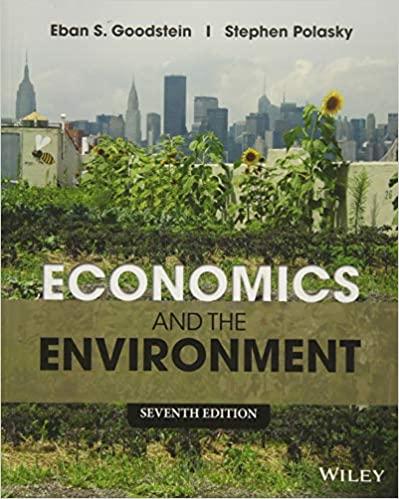Before passing regulations on Coke ovens in the steel industry, the EPA estimated that the costs of
Question:
Before passing regulations on Coke ovens in the steel industry, the EPA estimated that the costs of controlling hazardous air pollutant emissions would be about $4 billion;
four years later, that estimate had fallen to between $250 and $400 million. Similarly, projections for benzene emission control were on the order of $350,000 per plant; in actuality, chemical companies found they were able to use substitutes, which “virtually eliminated control costs.”2
Weshowed in this appendix that industry has an incentive to overstate costs if faced with marketable permit regulation. Does the same incentive hold for CAC regulation, which was used in Applications 15.0 and 15A.0?
1. Assume (1) that the EPA’s initial cost estimates provided earlier were based on industry sources and (2) that the EPA sought to regulate these pollutants at the efficient level.3 Use a diagram to provide a possible explanation for why the cost estimates were so high. (Show that under CAC regulation, where a uniform emission standard is set, industry has an incentive to overstate true costs.)
Data from appliaction 15.0
Two plants are emitting a uniformly mixed pollutant called gunk into the beautiful sky
over Tourist-Town. The city government decides it can tolerate total emissions of no
more than 100 kg of gunk per day. Plant G has marginal reduction costs of 100 − 4x
and is currently polluting at a level of 25, while plant K has marginal reduction costs of
150 − y and currently pollutes at a level of 150 (x and y are the level of emissions at
each plant).
Data from appliaction 15A.0
Suppose that gunk has marginal benefits of reduction equal to 20 − 2x, and marginal
costs of reduction equal to 5 + x/2, where x is the tons of gunk reduced.
Step by Step Answer:

Economics And The Environment
ISBN: 9781118539729
7th Edition
Authors: Eban S. Goodstein, Stephen Polasky





